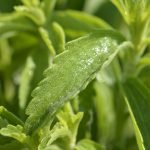Botanical Pearls for Geriatric Patients
Robin DiPasquale, ND, RH (AHG)
I asked several nurse practitioner colleagues who work solely with the geriatric population about what the top health concerns were for their patients. They cited bowel issues (constipation and diarrhea), urinary incontinence and urinary tract infections (often symptom free), memory and cognition function issues, and decreased quality of sleep.
In this article, we will look at these top health concerns, with a focus on botanical therapies. However, we must first discuss the elephant in the middle of the room, often a contributing factor to many of these issues. That elephant is polypharmacy. As persons age and begin to have disease symptoms, they see their MD or nurse practitioner; with limited time allotted to an office call, they are prescribed a pharmaceutical drug to address that symptom. As new symptoms arise, they are each addressed with another drug, a different drug. As these drug prescriptions accumulate, the action and adverse effects can become a contributing factor to ongoing health concerns. Being able to take the time to fully evaluate a patient’s history, including the list of pharmaceutical prescriptions, can often uncover the real reason behind these health concerns. Assisting in reevaluating the need for these drugs, and finding other treatment options, can get these elder patients on the road to a better quality of life. As NDs, focusing on this task is one where we can truly influence the changes in someone’s life toward better health in aging.
Bowel Issues (Constipation and Diarrhea)
Bowel issues can ruin someone’s day, or even their life. I have worked with many elder patients who cannot leave their house because of nonfunctional bowels. Remembering the naturopathic principle to “find the cause” is essential when addressing bowel issues, especially diarrhea. The potential for parasitic overgrowth and inflammatory gut reactions should be evaluated. In the elderly, a diminishment of pancreatic enzymes may be contributing to diminished function. Working with the diet is essential. In the geriatric population, there can be many roadblocks to dietary adjustments, including financial constraints, inability to get to the store to shop, insufficient energy or strength to prepare foods, meals provided in an assisted-living facility, or a lifetime of “bad” eating habits. Address each individual where he or she is, and suggest changes based on what each patient is able and willing to do.
Whether the issue is diarrhea or constipation, a probiotic can be effective for bringing about better function. Probiotic therapy is a topic all unto itself; however, one area that I currently pay attention to is whether there is small intestine bacterial overgrowth present. If so, I will prescribe Sacromyces boulardii initially for a period of 1 to 3 months, before moving on to Lactobacillus acidophilus and Bifidobacterium bifidum.
With diarrhea, limiting foods to the BRAT diet (bananas, rice, applesauce, and toast) for a day or more can take the burden off the digestive system, while still providing nutrients. Be conscious of dehydration, checking the intake of adequate fluids. Herbs to consider with diarrhea are the high mucilaginous herbs, such as Althea officinalis (marshmallow), Ulmus fulva (slippery elm), Malva species (mallow), Plantago species (plantain), and Aloe vera (aloe), all of which can bring coolness and moisture to an inflamed mucous membrane to facilitate healing. These high-polysaccharide high–soluble fiber herbs also sequester toxins and carry them out through the feces. Ceratonia siliqua (carob powder) (1-3 teaspoons), blended in water or mixed in applesauce, soothes the mucous membranes and binds the stool. Immune-modifying herbs can optimize the immune system’s response and assist the gut function back to balance. Immune-modifying herbs to consider are Echinacea species (purple coneflower), Uncaria tomentosa (cat’s claw), Andrographis paniculata (andrographis), and one of the berberine alkaloid–containing herbs, such as Mahonia aquifolium (Oregon grape), Coptis chinensis (goldenthread), Hydrastis canadensis (goldenseal), Berberis species (barberry), and Mahonia trifoliate (algerita). l-glutamine may be useful, along with quercetin.
Decreased consumption of fiber, both soluble and insoluble, can be a contributing factor to constipation in the elder population. Inadequate amounts in the diet can be a result of dietary choices high in processed foods, as well as the inability to chew high-fiber foods because of loss of teeth or wearing dentures. With diminished fiber, the stretch receptors throughout the colon are less functional, resulting in less peristaltic initiation of bowel movement. Supplemental fiber sources can bulk up the stool, initiating peristalsis. Key fiber sources (in addition to fruits, vegetables, grains, and legumes) include psyllium seeds (seeds are preferred nutritionally over the husks only), ground flaxseeds, and chia seeds. Chia seeds contain fiber, protein, and fat, with greater than 50% a-linolenic acid.
Botanical medicine can be used to treat constipation through the use of laxative herbs. These can be on the continuum of mild to strong, the strong being called purgative herbs. Dosing can determine a mild action to a more purgative action.
Several first-line laxative herbs to consider are Frangula purshiana (formerly Rhamnus purshiana), Cascara sagrada, Rheum species (rhubarb), and Rumex crispus (yellow dock).
The Eclectic physician Dr Bundy said of F purshiana, “[I]t acts upon the sympathetic nervous system, especially upon the solar plexus, stimulating the nutritive and assimilative forces, increasing the digestive process generally. It acts upon the secretory system in a marvelous manner, especially where the secretions are deficient and perverted, and this seems to be one of its special indications.”1(p302) From the London Medical Records in 1885, Scheltzeff observed about Cascara bark, “[I]t does not mechanically liquefy and empty the intestinal canal, but it restores normal elasticity and tone to the relaxed structures, and natural vermicular motion and peristaltic action exercising a direct influence upon muscular structure of the intestinal walls.”1(p303) I choose F purshiana, as well as Rheum species, when working with patients having constipation who will benefit from this tonifying effect. Rheum is a laxative, with significant astringent action, used in chronic conditions of the bowels, acting directly on the duodenum and subsequently on the entire intestinal tract. Rather than being listed in the section on laxatives and purgatives, Rumex is discussed in the materia medica by Felter2 under agents that influence the character of the blood, listed as a glandular alterative. Owing to its bitter nature, as well as its astringent action, yellow dock is also considered an effective herb for reestablishing function in the intestines. Many contemporary herbal laxative products contain Senna species, described by Ellingwood as “mild, kindly, certain and uniform in its action. Used in temporary constipation, it has a narrow but important sphere.”1(p307) A simple laxative recipe is the infusion of Senna leaves, strained, which is then used to stew prunes. Consuming 1 prune several times a day should resolve constipation. Senna does not have the tonifying effects of Frangula or Rheum.
Whatever the herbal laxative, it is recommended to formulate with carminatives herbs, such as Pimpinella anisum (anise), Foeniculum vulgare (fennel), or Zingiber officinale (ginger), to prevent any cramping or gripping. Antispasmodic herbs are often useful to include in a formula, especially in those to treat irritable bowel syndrome, including Viburnum opulus (cramp bark), Dioscorea villosa (wild yam), Actea racemosa (black cohosh), and Lobelia inflata (lobelia).
When differentiating the etiology, pathogenesis, and optimal treatment for constipation, consider this list from one of the Eclectic physicians, Dr Bundy1(p302):
- The nature of the diet
- Deficiency or faulty composition of the intestinal secretions
- Disordered glands that pour their secretions into the intestines
- Impairment of muscular power; deficiency of their propelling power resulting from nervous or mechanical influences
- Congestion of the portal circulation
- Normal secretion of intestinal juices interfered with
- Deficiency in biliary secretions of a healthy character
- Congestion of mucus membranes of intestines
- Last and most frequent—resisting the calls of nature from carelessness or circumstances that prevent obedience at the proper time
Urinary Incontinence and Urinary Tract Infections
Urinary incontinence or urinary leakage can be a result of a mechanical issue (eg, prolapsed bladder or uterus for women, often following pregnancies and childbirth, or for men due to prostate pathologic conditions, including benign prostatic hypertrophy or prostate cancer). In these situations, addressing the direct etiology, prolapsed organs, or urethral interference is essential. Urinary incontinence can also be a result of diminished sphincter control, which can be tied to a disturbance in the nervous system innervation or influences from hormonal changes. Hormonal balancing, a topic for another article, can diminish or resolve the incontinence if this is the etiology. Nervine herbs may be of some support in situations of disturbed nerve innervation. One nervine in particular to consider is Tilia species (linden tree) because of its ability to calm and soften nerve conduction, as well as its demulcent effects on the mucous membranes of the urethra. Combining Tilia with urinary tonics like Equisetum arvense (horsetail) and Zea mays (maise) can enhance the overall function of the urinary tract. I prefer to use these herbs in the gemmotherapy remedies owing to the regenerative properties of the bud extracts. Crataeva nurvala, called varuna in Sanskrit, is an Ayurvedic plant in the Capparidaceae (caper) family, and the bark or root bark is used medicinally. The actions of varuna are to increase bladder tone through increasing the tone of smooth and skeletal muscles, with an affinity for the urinary tract. It decreases the tendency to form calcium oxalate kidney stones, diminishing membrane irritation and inflammation.3 I often use Crataeva in combination with Vaccinium macrocarpon (cranberry) and Arctostaphylos uva ursi (bearberry).
Urinary tract infections can be the etiology of incontinence but can become more severe issues for the geriatric patient. Because many elderly patients wear pads owing to urinary incontinence, the potential for bacterial infections in the urinary tract is substantially increased. Urinary tract infections in the elderly can often be present without the usual symptoms of urinary frequency, urgency, burning or pain, or fever, so they may go undetected, which can lead to kidney infections or septicemia.
As a case study, JD is a 78-year-old man who was diagnosed 20 years previously as having benign prostatic hypertrophy. He underwent transurethral resection of the prostate 15 years ago and since then has been taking a prostate formula containing Serenoa repens (saw palmetto), Urtica dioica (nettle root), and A uva ursi (bearberry). He had 2 episodes (5 years apart) of bacterial infections and urine retention due to blood clotting. Both episodes were following cystoscope evaluations by his urologist, and both were resolved with antibiotics. Six weeks after the second episode, JD was taken to the hospital in the middle of the night by ambulance, and he spent the next week in the intensive care unit recovering from septicemia. He had had no symptoms of a urinary tract infection.
Urinary tract infections that are without symptoms are difficult to treat, because we are unaware that they need to be treated. One preventive support herb for the urinary tract is V macrocarpon (cranberry), which has been shown to prevent bacteria from adhering to the mucous membranes throughout the urethra, bladder, and ureters. Another herb of interest is A uva ursi (bearberry), primarily because of its constituent arbutin. I was always taught by my herbal mentors to use A uva ursi short term because of the potential mucous membrane–irritant properties of the hydroquinone.
Memory and Cognitive Function
Diminished cognitive function and memory loss can be one of the biggest challenges for individuals as they age, depending on the degree of loss. Antioxidant activity and inflammation modulation are 2 actions of herbal medicine that can slow down and prevent these signs of mental deterioration. In the Western materia medica, Ginkgo biloba is the herb recognized for enhancing cognitive function, working through its ability to increase cerebral circulation. The Ayurvedic materia medica offers a wealth of herbs that can help maintain sharp and acute mental function. The 2 primary herbs in this grouping happen to share the same name, brahmi, meaning supreme reality: Bacopa monnieri (thyme-leaved gratiola) and Centella asiatica (gotu kola). Bacopa significantly improved memory acquisition and retention in a randomized trial of 98 healthy individuals older than 55 years.4 There was significant improvement in speed of visual information processing, learning rate, and memory consolidation in adults aged 40 to 65 years taking Bacopa.5 This herb also showed a reduction in b-amyloid deposits in mice with Alzheimer disease.6 Centella is a tonic for pitta, inhibits vata, calms the nerves, and decreases excess kapha. The main revitalizing herb for the nerves and brain cells, it increases intelligence, longevity, and memory, and it decreases senility and aging. Centella strengthens the adrenals, an endocrine link to diminishing cognitive function.
Other herbs in the Ayurvedic materia medica that can be useful for memory and care of the mental processes are Ocimum sanctum (tulsi), Eclipta alba (bhringaraj), Withania somnifera (ashwagandha), and Acorus calamus (sweet flag). Tulsi, the holy basil found in each Hindu household, is a sacred herb in the Lamiaceae family. It removes high vata from the colon, improves absorption, and strengthens the nerve tissue, increasing memory. Bhringaraj, an Asteraceae family plant, can help calm the mind from excessive activity, preventing the aging process and helping maintain memory. Ashwagandha, a Solanaceae family plant also called winter cherry, has a strong sattvic quality, the softening quality. This is one of the best herbs for nurturing and clarifying the mind. Sweet flag, in the Araceae family, is a rejuvenating herb for the brain and nervous system, purifying and revitalizing. It increases cerebral circulation, sharpens memory, and enhances awareness.7
Disturbed Sleep
When evaluating sleep, it is essential to look at both quantity and quality. As persons age, they often require fewer hours of sleep; however, if the quality of that sleep is diminished, the quality of overall wellness is affected. Diminished sleep quality, although not limited to being a health concern for just the aging population, can trigger many individuals to seek pharmaceutical sleep aids. Antidepressant and antianxiety drugs, in addition to prescription and over-the-counter sleep-inducing agents, are now being used to assist those who suffer from disturbed sleep.
The sedative-hypnotic herbs can be used to bring about sleepiness and facilitate the ability to fall into a deeper state of sleep and remain there, often without the adverse effects or addictive properties of pharmaceutical agents. One sedative-hypnotic herb that is very well known and often included in sleep formulas is Valeriana officinalis (valerian). Keep in mind that Valeriana can have the paradoxical effect for some individuals, stimulating rather than sedating. Two herbs that work beautifully to induce sleep are Eschscholtzia californica (California poppy) and Lactuca virosa (wild lettuce), extremely effective when combined. Eschscholtzia acts as an anxiolytic, quieting the overthinking or ruminating mind. Passiflora incarnata (passionflower) acts as a sedative to induce a sleepy state and as an antispasmodic. Combined with magnesium, passionflower can quiet the restless or tense muscles that may be contributing to disturbed sleep.
Supporting good-quality sleep requires more than just inducing a sedative state at bedtime. The use of trophorestorative herbs for the nervous system throughout the waking hours can promote a more balanced nervous response to daily activities and to sleep. Drinking 2 cups per day of Avena sativa (oat straw or milky oat pods) and Scutellaria lateriflora (skullcap), equal parts prepared as a long infusion (8-10 hours), will bring an overall soothing state within, which will be reflected during waking hours and in improving the quality of sleep. Other trophorestorative herbs to consider are Hypericum perforatum (Saint-John’s-wort), Verbena officinalis (vervain), and Melissa officinalis (lemon balm).
Assisting our elderly patients in facilitating good sleep hygiene goes a long way in supporting good-quality sleep. Included in sleep hygiene practices can be setting a consistent bedtime each night, turning off television and electronic devices 1 to 2 hours before bedtime, sipping a cup of quieting tea, taking a relaxing bath with essential oils that calm the nervous system, or reading your favorite poetry. Two herbal infusions to consider for that hour before bedtime are Tilia species (linden) or Matricaria recutita (chamomile). The Ayurvedic herb W somnifera (ashwagandha) speaks of its sleep-supporting quality in its name. Withania is a nerve tonic rejuvenative adaptogen and specifically decreases the vata dosha.7 The geriatric time of life is the vata time of the life cycle, so bringing in the ceremonial use of ashwagandha—steeped in warm milk with cardamom, cinnamon, and a little honey or maple syrup—in the evening as part of bedtime preparation can set the stage for deeper better-quality sleep.
Conclusion
Working with the geriatric patient population requires specific attention to the overall challenges of this time of the life cycle, as well as addressing each individual. Older persons can often move slower, think slower, and become overwhelmed with too much information. More frequent appointments, where simpler treatment recommendations are made, along with including support individuals in the treatment plan, can lead to a more effective outcome, whatever the presenting symptoms. It is our time, as more people on the planet move into the geriatric years, to bring quality care to our wise elder patients.
 Robin DiPasquale, ND, RH (AHG) earned her degree in naturopathic medicine from Bastyr University in 1995 where, following graduation she became a member of the didactic and clinical faculty. For the past eight years she has served at Bastyr as department chair of botanical medicine, teaching and administering to both the naturopathic program and the bachelor of science in herbal sciences program. Dr. DiPasquale is a clinical associate professor in the department of biobehavioral nursing and health systems at the University of Washington in the CAM certificate program. She loves plants, is published nationally and internationally, and teaches throughout the U.S. and in Italy on plant medicine. She is an anusara-influenced yoga instructor, teaching the flow of yoga from the heart. She currently has a general naturopathic medical practice in Madison, Wis., and is working with the University of Wisconsin Integrative Medicine Clinic as an ND consultant.
Robin DiPasquale, ND, RH (AHG) earned her degree in naturopathic medicine from Bastyr University in 1995 where, following graduation she became a member of the didactic and clinical faculty. For the past eight years she has served at Bastyr as department chair of botanical medicine, teaching and administering to both the naturopathic program and the bachelor of science in herbal sciences program. Dr. DiPasquale is a clinical associate professor in the department of biobehavioral nursing and health systems at the University of Washington in the CAM certificate program. She loves plants, is published nationally and internationally, and teaches throughout the U.S. and in Italy on plant medicine. She is an anusara-influenced yoga instructor, teaching the flow of yoga from the heart. She currently has a general naturopathic medical practice in Madison, Wis., and is working with the University of Wisconsin Integrative Medicine Clinic as an ND consultant.
References
- Ellingwood F. American Materia Medica, Therapeutics, and Pharmacognosy. 11th ed. Sandy, OR: Location: Eclectic Medical Publications; 1998
- Felter HW. The Eclectic Materia Medica, Pharmacology, and Therapeutics. 3rd printing. Sandy, OR: Eclectic Medical Publications; 1994.
- Bone K. Clinical Applications of Ayurvedic and Chinese Herbs: Monographs for the Western Herbal Practitioner. Queensland, Australia: Phytotherapy Press; 1996.
- Morgan A, Stevens J. Does Bacopa monnieri improve memory performance in older persons? results of a randomized, placebo-controlled, double-blind trial. J Altern Complement Med. 2010;16(7):753-759.
- Stough C, Lloyd J, Clarke J, et al. The chronic effects of an extract of Bacopa monniera (brahmi) on cognitive function in healthy human subjects. Psychopharmacology (Berl). 2001;156(4):481-484.
- Dhanasekaran M, Tharakan B, Holcomb LA, Hitt AR, Young KA, Manyam BV. Neuroprotective mechanisms of Ayurvedic antidementia botanical Bacopa monniera. Phytother Res. 2007;21:965-969.
- Frawley D, Lad V. The Yoga of Herbs: An Ayurvedic Guide to Herbal Medicine. Twin Lakes, WI: Lotus Press; 1986.










